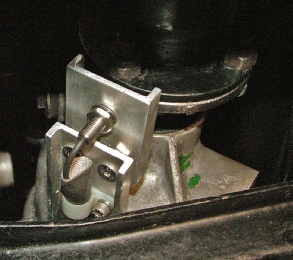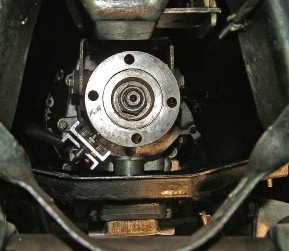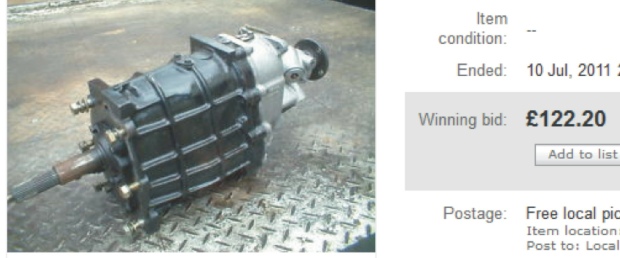 Home
Home


LT77 gearbox

Transmission jack from Draper (53095) -

This is the speedo drive take off I forgot to seal.

I’ve had a bit of trouble with gearboxes in the TR7! All TR7 5 speed gearboxes are LT77s and this gearbox is also used in the Rover SD1. There improvements over the years and I think the suffix “E” are reckoned to be the best.
However, they all seem to suffer from problems with the bearing in the input shaft and the gears on that shaft and the lay shaft. Once they are worn apparently they cannot be renewed and the gearbox is more or less toast.
It’s easy to spot as you just need to waggle the input shaft from side to side. If you can feel any play, it’s had it!
The gearbox on this car when I bought it made an horrible noise especially in neutral with the clutch pedal not pressed. I hoped that this was just a failed clutch release bearing. However, what I found was that the pilot bearing in the end of the crank was too big for the gearbox input shaft. That had put a lot of strain on the gearbox input bearings and gears and they were cream crackered.
Since the engine was ex Range Rover, I assume the input shaft on a Range Rover version of an LT77 is bigger than the two-
I did have a LT77 in the garage and the input shaft seemed to be pretty good in terms of lack of play so I fitted that. Unfortunately, I immediately found synchro on second had gone.
I then bought another LT77 to have rebuilt while I struggled on with the missing synchro. There was a bit of play on the input shaft but the bloke at the reconditioning workshop seemed to think it would be ok. So I forked out £350. When I fitted the gearbox some months later, it was not ok. It was really whiny (but it changed gear ok). So I left it on until I changed the engine.
Then I tried the LT77 which had been on the SD1 Vitesse which I had broken for parts. I had been saving it to use on the Rover T-
How I wish I had bought the new R380 gearbox (two wheel drive version made for the MG RV8 I think) perhaps eight years ago. This is apparently a much stronger box with bearings and gears which can be repaired and made to mate with the V8. They are now rarer than hen’s teeth. (The four wheel drive Range Rover box is also called an R380 but I assume with the transfer box on the end it couldn’t be used on the TR7.)


Magnet
Sensor

The car used an aftermarket speedo (ETB) so it needed a sensor somewhere on the drive train down wind of the gearbox. The easiest place is on the rear drive flange. Small holes need to be drilled in the edge diametrically opposite each other. The holes should be an easy fit for the button magnets which need to fit in them to trigger the sensor. This is to give room for some epoxy. The magnets should stick out a little and have the right poles facing out (see the instructions which came with the gauge).
The sensor was mounted on a couple of bits of aluminium bolted onto one of the redundant cross-
I forgot to put a cover plate over the old mechanical speedo drive take of and this resulted in a mysterious oil leak. I replaced the rear oil seal before I noticed what I had not done!
Driving the speedo
Gearbox woes


Ads like this are what I should have been wary of!
